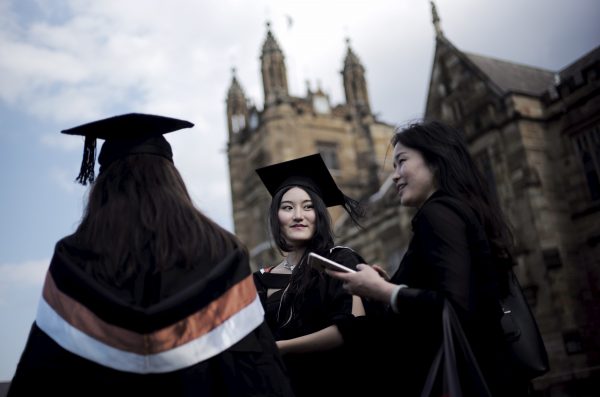In recent years, students from China have consistently been the biggest group of international students in Australia — about 30 per cent — with over 200,000 in September 2019. In Group of Eight universities, Chinese students comprise 60 per cent of the international student body. Fears of over-concentration are driving universities to attempt to diversify source countries for international enrolments. But relative levels of economic development in alternative source countries mean that it is unlikely in the short to medium-term that China could be replaced.
The COVID-19 pandemic has caused unprecedented disruption to Australian international education. Travel bans have seen around 120,000 international students stuck overseas. Those who are stranded in Australia are struggling financially: without income from casual work, excluded from federal safety nets and lacking the means to return home. Universities Australia estimates that revenue across the nation’s universities will decline by AU$3–4.6 billion in 2020 as a result of disruption to international enrolments. Anxieties are running high about the future of Australian international education and its higher education sector as a whole.
What factors could adversely affect international students’ desire to study in Australia after COVID-19, and how can Australia improve this outlook?
The quality of student experience does not rely solely on the excellence of the education they receive. Rather, as Bruce Baird observed in his 2010 review of the Education Services for Overseas Students (ESOS) Act, ‘Australia’s international education reputation depends on how well we provide for the wellbeing of international students and their whole experience of studying and living in Australia’.
Hospitality, living and wellbeing factors rank highly in a prospective international student’s choice of where to study. A sense of local connection and social inclusion is also a prime factor influencing a student’s likelihood of recommending a study destination to acquaintances. The experiences of current cohorts of Chinese students can influence the choices of future students about where to study, affecting the long-term sustainability of international education in Australia.
Even before the COVID-19 crisis, life for Chinese students in Australia was not rosy. Research findings show that many experience vulnerabilities including: limited access to reliable local information and vulnerability to misinformation, racism and social exclusion, and restricted opportunities for intercultural mixing. On a more institutional level, many experience restricted or exploitative work, exploitation in rental accommodation, difficulties engaging effectively with Australian police processes as victims of crime and difficulties accessing Australian health systems including mental health support.
To address these problems, international students must be reconceptualised as part of the national youth population with associated rights as such. International students are part of Australian communities, and the benefits that they bring extend beyond universities.
Supporting these young people requires four key measures. First, Australia should work to improve communication with international students, especially in-language and via relevant social media platforms. Second, Australia can develop more effective regulation to protect international students’ rights and interests, such as systematically regulating information provision and homestay standards. Third, increased support for local agencies is necessary for them to respond effectively to international students’ needs. One example is increased resourcing to support the provision of legal advice on tenants’ and workers’ rights. Finally, further collaboration with culturally and linguistically diverse communities can help to develop effective systems to safeguard international students’ wellbeing.
Currently, under the ESOS Framework, education providers are responsible for providing information and services to international students to support their wellbeing while they live in Australia. But not only is the ESOS Framework vague on specific expectations, it is also clear that multiple aspects of students’ lives in Australian communities lie beyond the capacity of education providers to access or regulate. International students in Australia have multiple identities other than student — tenant, job seeker, employee, patient, volunteer, victim of crime — that see them engage with a wide array of local systems and institutions.
As a result, there is a mismatch between the purview of the agencies tasked with responsibility for providing information and services to support student wellbeing — education providers — and the much wider scope of the students’ actual everyday engagements in Australian communities. This mismatch is a key factor underlying the current patchy protection of international students’ wellbeing.
The development of a more systematic approach to international students’ wellbeing and clearer and more enforceable standards hinges on increased investment by governments and education providers. Given the significant revenues generated for both universities and the wider Australian community by international students’ fees and spending, it is reasonable that a proportion of this income should be re-invested to safeguard these students’ wellbeing.
Supporting international students’ wellbeing in Australia would not only give a competitive advantage to Australian education in the future global marketplace, it would also shape generational attitudes towards Australia overseas including in China. More importantly, supporting these students’ wellbeing is the nation’s ethical responsibility to them as young people entrusted into our care.
Fran Martin is Reader in Cultural Studies and Australian Research Council Future Fellow at The University of Melbourne.

